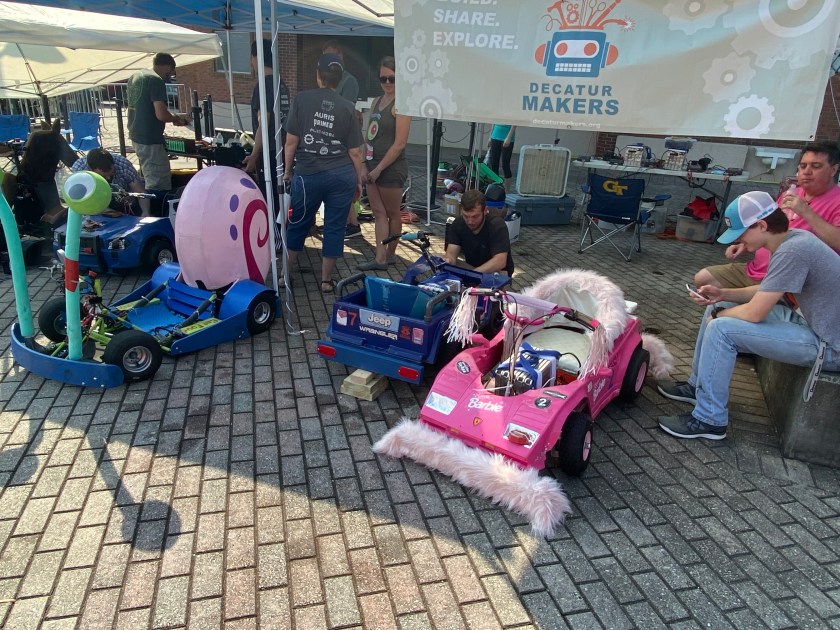COVID-19 quarantine continues and the extended time at home has presented another opportunity to pursue another passion project – performing every experiment in the Make: Electronics book, cover to cover with my children.

Learning by Discovery by Charles Platt
I didn’t want to piecemeal acquire the parts and potentially have any delays when we got started. The quarantine has noticeably exacerbated shipping delays. When we got started I wanted to be able to stream roll through the book. The second edition has a checklist appendix of all the supplies required and I purchased them all on amazon.com piecemeal in one fell swoop. (I know there are kits out there for this book, but I wanted to get lots of spares so both children could work simultaneously under my tutelage. You can never have enough LEDs, am I right?

Make: Electronics Chapter 1
Experiment 1: Taste The Power
The kids were amazed at the tingle on their tongues! We were off to a good start
Experiment 2: Let’s abuse a Battery
This was a good experiment to discuss the concept of short circuits and the engineering reason for having a fuse in a circuit as an electrical safety feature. I had a leftover spare 3 amp circuit in hand that we used for the experiment. The children again were amazed how hot the wires and batteries got for this experiment. It was exciting to see the fuse blow under real-time observation.

Experiment 3: Your First Circuit
We opened up my old resistors and they had become jumbled and to my dismay the packs were not labeled. This was the perfect opportunity to introduce the multimeter and take the time to measure and label the resistance of each pack. It took a while to execute but the children were pros at this activity at the end.


After the values were all measured and the resistor packs were sorted by least ohms to largest ohms we made our first battery-resistor-led circuit. We started with the largest value resistor which produced no light and then decreased the value which demonstrated an increasingly brighter LED.
Experiment 4: Varying the Voltage

With the concept of resistors mastered from the previous experiment, it was relatively easy for the children to grasp the concept of a potentiometer varying resistance as evidenced by the dimming LED with the turn of the knob. I admit – in a 2020 digital world there is something so gratifying about the smooth velvety feel of the analog knob of the potentiometer. Velvety smooth!

Experiment 5: Let’s Make a Battery

We didn’t have much success with this experiment. We got some voltage out of our setup but not much and not enough to light an LED. I don’t think we had enough fresh lemons and we substituted what I believe were galvanized washers in place of the galvanized metal plates, so perhaps one of these elements was a contributing factor.
Conclusions
Make: Electronics Chapter 1 was complete! The children were able to use a multimeter, understand the concept of voltage, current, and resistance. They built their first circuits, made LEDs light up and dim, and explored the use of a potentiometer. We were off to a good start!














































































































 .
.










